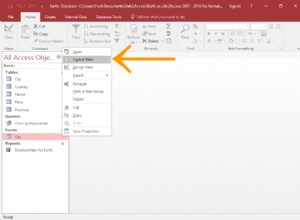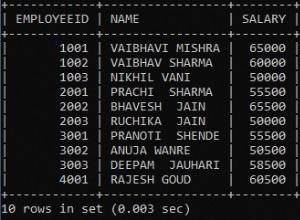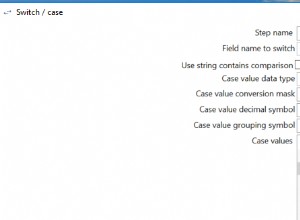Kueri ini akan menghasilkan jumlah untuk setiap baris:
SELECT allocation, d, count(*) OVER (PARTITION BY allocation, part ORDER BY d) AS c
FROM (
SELECT allocation, d,
d - row_number() OVER (PARTITION BY allocation ORDER BY d) AS part
FROM t
)
ORDER BY d;
Anda kemudian dapat memfilternya untuk menemukan jumlah untuk baris tertentu:
SELECT c
FROM (
SELECT allocation, d, count(*) OVER (PARTITION BY allocation, part ORDER BY d) AS c
FROM (
SELECT allocation, d,
d - row_number() OVER (PARTITION BY allocation ORDER BY d) AS part
FROM t
)
)
WHERE d = DATE '2015-01-05';
Penjelasan:
Tabel turunan digunakan untuk menghitung berbagai "partisi" part untuk setiap tanggal dan alokasi:
SELECT allocation, d,
d - row_number() OVER (PARTITION BY allocation ORDER BY d) AS part
FROM t
Hasilnya adalah:
allocation d part
--------------------------------
Same 01.01.15 31.12.14
Good 02.01.15 01.01.15
Same 03.01.15 01.01.15
Same 04.01.15 01.01.15
Same 05.01.15 01.01.15
Good 06.01.15 04.01.15
Tanggal konkret yang dihasilkan oleh part tidak relevan. Hanya beberapa tanggal yang akan sama untuk setiap "grup" tanggal dalam alokasi. Anda kemudian dapat menghitung jumlah nilai identik dari (allocation, part) menggunakan count(*) over(...) fungsi jendela:
SELECT allocation, d, count(*) OVER (PARTITION BY allocation, part ORDER BY d) AS c
FROM (...)
ORDER BY d;
untuk menghasilkan hasil yang Anda inginkan.
Data
Saya telah menggunakan tabel berikut sebagai contoh:
CREATE TABLE t AS (
SELECT DATE '2015-01-01' AS d, 'Same' AS allocation FROM dual UNION ALL
SELECT DATE '2015-01-02' AS d, 'Good' AS allocation FROM dual UNION ALL
SELECT DATE '2015-01-03' AS d, 'Same' AS allocation FROM dual UNION ALL
SELECT DATE '2015-01-04' AS d, 'Same' AS allocation FROM dual UNION ALL
SELECT DATE '2015-01-05' AS d, 'Same' AS allocation FROM dual UNION ALL
SELECT DATE '2015-01-06' AS d, 'Good' AS allocation FROM dual
);




